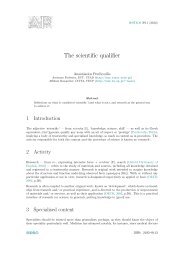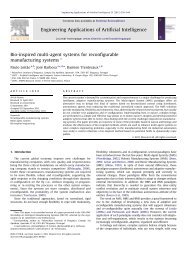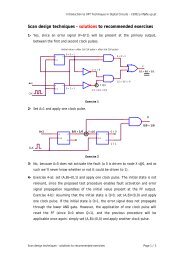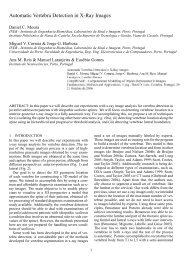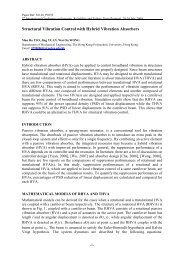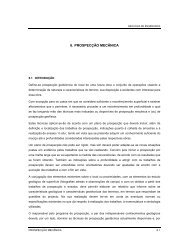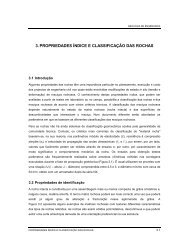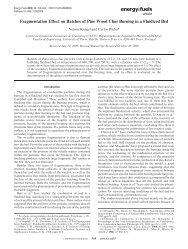Use-Case Controller
Use-Case Controller
Use-Case Controller
Create successful ePaper yourself
Turn your PDF publications into a flip-book with our unique Google optimized e-Paper software.
<strong>Use</strong>-<strong>Case</strong> <strong>Controller</strong> 7<br />
Structure<br />
The <strong>Use</strong>-<strong>Case</strong> <strong>Controller</strong> pattern defines five types of participants:<br />
<strong>Use</strong><strong>Case</strong><strong>Controller</strong>, Model, View, Extension and Inclusion.<br />
Class<br />
<strong>Use</strong><strong>Case</strong><strong>Controller</strong><br />
Responsibilities<br />
• Ensures the<br />
correct execution<br />
of an use case<br />
• Handles use case<br />
events from views<br />
and models<br />
Collaborations<br />
• View<br />
• Model<br />
• Extension<br />
• Inclusion<br />
An instance of <strong>Use</strong><strong>Case</strong><strong>Controller</strong> is an object that encapsulates<br />
the knowledge needed to ensure the correct execution of one<br />
particular use case specification: sequence of action steps,<br />
states, preconditions, post-conditions, and components, both for<br />
accepting user input and for performing system services.<br />
As a rule of thumb, one <strong>Use</strong><strong>Case</strong><strong>Controller</strong> will be designed for<br />
each use case. When a use case is started, one instance of the<br />
corresponding use-case controller is created to control the flow<br />
of the interactions involved. Depending on the size and<br />
complexity of the controller, one might decide to create several<br />
use-case controllers for a particular use case, or the opposite.<br />
A use-case controller is not intended to interact directly with<br />
either interface objects or system objects, but only to Model and<br />
View objects, thereby promoting some layering at use-case level.<br />
Class<br />
Collaborations<br />
Class<br />
Collaborations<br />
Model<br />
Responsibilities<br />
• <strong>Use</strong>-case<br />
<strong>Controller</strong><br />
View<br />
Responsibilities<br />
• <strong>Use</strong>-case<br />
<strong>Controller</strong><br />
• Provides system<br />
information and<br />
functionality<br />
needed during<br />
use case<br />
execution<br />
• Presents<br />
information to<br />
actors<br />
• Receives actors<br />
input<br />
A use-case controller is typically associated with a Model facade,<br />
through which it has access to the subset of data and<br />
functionality needed to perform system-related actions. On the<br />
other hand, to communicate with the actors, a use-case<br />
controller relies on View facades. A View is usually an<br />
aggregation of several interface objects, such as windows, menus<br />
and buttons, dialogs and communication protocols.<br />
Copyright © 2001 Ademar Aguiar, Alexandre Sousa and Alexandre Pinto.<br />
All rights reserved. Permission granted to copy for all purposes of EuroPLoP’2001.




